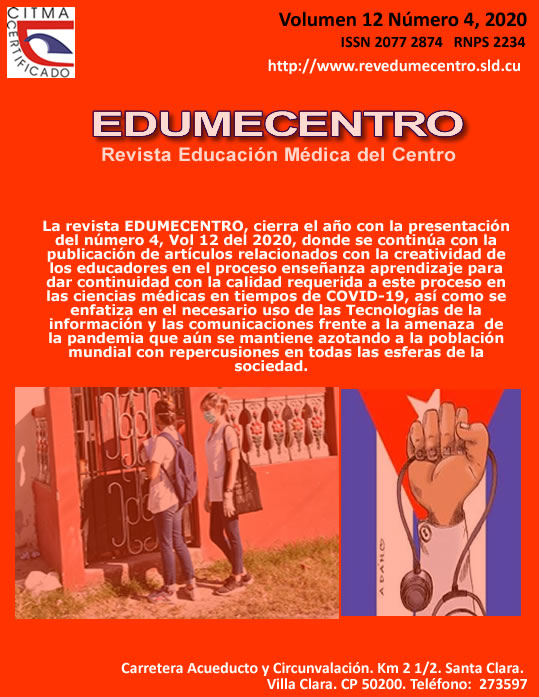The basic-clinical integration in the proper Course Interpretation of the inflammatory process and pain of the pulp
Keywords:
estudiantes de Odontología, strategies, educatión, medicalAbstract
Background: integration is a trend and imperative in university science teaching, which has led to changes in curricular designs.
Objective: to implement pedagogical actions to increase the basic-clinical integration of the contents of the course Interpretation of the inflammatory Process and Pain of the Pulp in third-year students of the Dentistry degree.
Methods: a development investigation with a qualitative approach was carried out at the Faculty of dentistry of Camagüey University of Medical Sciences, from March 2017 to March 2018. The theoretical methods used were: induction-deduction and analysis-synthesis for the theoretical foundation; and empirical ones: documentary review, interviews with students and assessment by specialists through critical opinion and collective construction workshops. It was carried out in three stages: documentary review, definition of pedagogical actions, and implementation and evaluation.
Results: the implemented actions included the preparation of teachers to face a process focused on basic-clinical integration, permanent exchange with other professionals from clinical specialties, methodological work based on basic-clinical integration based on the establishment of the links between contents and with the use of problem-based teaching, the design of integrative evaluations and the research work of students aimed at showing the relevance of basic knowledge for clinical practice.
Conclusions: the pedagogical actions designed were valued by the specialists as adequate to increase the basic-clinical link, because they constitute a didactic tool in the necessary process of integration in Cuban medical education.
Downloads
Published
How to Cite
Issue
Section
License
Los autores que publican en esta revista están de acuerdo con los siguientes términos:- Los autores/as conservarán sus derechos de autor y ceden a la revista el derecho de primera publicación de su obra, el cuál estará simultáneamente sujeto a una Licencia Creative Commons Reconocimiento-NoComercial-CompartirIgual 4.0 Internacional (CC BY-NC-SA 4.0) que permite a terceros compartir la obra siempre que se indique su autor y su primera publicación esta revista.
- Los autores pueden establecer por separado acuerdos adicionales para la distribución no exclusiva de la versión de la obra publicada en la revista (por ejemplo, situarlo en un repositorio institucional o publicarlo en un libro), con un reconocimiento de su publicación inicial en esta revista.
- Se permite y se anima a los autores a difundir sus trabajos electrónicamente (por ejemplo, en repositorios institucionales o en su propio sitio web) antes y durante el proceso de envío, ya que puede dar lugar a intercambios productivos, así como a una citación más temprana y mayor de los trabajos publicados (Véase The Effect of Open Access) (en inglés).







